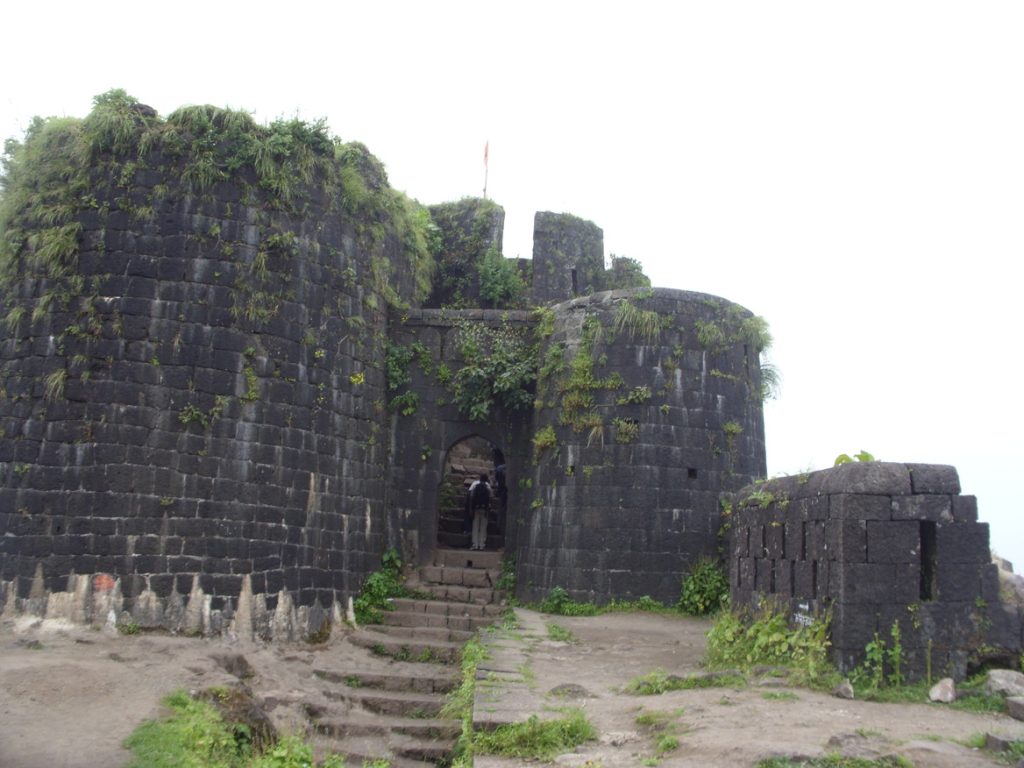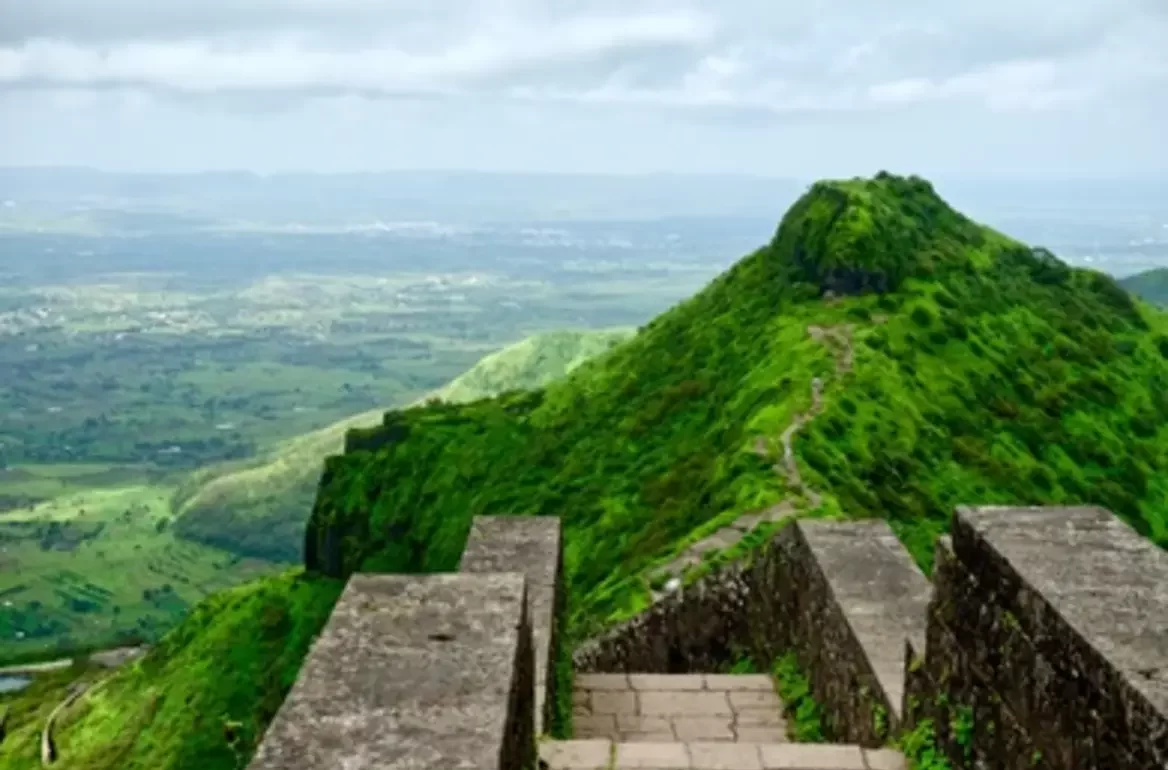Purandar Fort: The mountain fort known as Purandar Fort is located in the Pune district of the Maharashtra state in Western India. The fort is located in the Western Ghats, 50 kilometers (31 miles) southeast of Pune, perching at an elevation of 1,374 meters (4,508 feet) above sea level.
On the eastern side of the main fort, rising 1,347 meters (4,419 feet) above sea level, are the twin forts of Purandar and Vajragad (or Rudramal), the smaller of the two. This fort gave rise to the settlement of Purandar. Dharmaveer Chatrapati Sambhaji Maharaj was born there.
History Of Purandar Fort
The Purandar fort’s existence is first mentioned in writing during the 11th-century Yadava kingdom. After their victory over the Yadavas, the foreign invaders seized control of the surrounding area and strengthened Purandar Fort in 1350 A.D. The early periods of the reigns of the Bijapur and Ahmednagar monarchs saw direct governance of Purandar Fort, without granting it to the Jagirdars.
During the rule of the Berar Sultanate, the fort endured multiple sieges. To prevent the Purandar Fort from ever collapsing again, its patrons buried a man and a woman alive under one of the fort bastions in a sacrificial ritual. Soon after, the king carried out another rite in which he gave a minister orders to bury a first-born son and his mother in the bastion’s foundation. Immediately after completing the bastion, they offered a second round of bricks and cash. The father of the sacrificed kid received two villages, and Yesaji Naik, the minister, took possession of the Purandar Fort.
In 1596 A.D., Bahudar Shah of the Ahmadnagar Sultanate granted Maloji Bhosale, Shivaji’s grandfather, the lands of “Pune” and “Supa,” which included the Purandar Fort.
Resistance in Maratha Wars
In one of his earliest victories for the Maratha Empire, Shivaji Maharaj, yet a young man, raided and took control of the fort in 1646 A.D. The Aurangzeb army, led by Jai Singh II and supported by Diler Khan, besieged the Purandar Fort in 1665 A.D. As the killedar (keeper of the fort), Murarbaji Deshpande of Mahr put up a valiant fight against the Mughal army, eventually sacrificing his life to protect the fort. Terrified by the idea of his grandfather’s fort collapsing, Shivaji Maharaj and Aurangzeb negotiated the First Treaty of Purandar in 1665. According to the terms of the contract, Shivaji received appointment as jagirdar of the province and was granted twenty-three forts, including Purandar, along with a territory that generated four lakh hons in revenue.
In 1670 A.D. was short-lived, as in just five years, Shivaji rose up against Aurangzeb and retook Purandar. When the Peshwa capital city of Pune came under attack, the Purandar Fort served as a bastion. The Second Treaty of Purandar was signed in 1776 A.D. by the British Raj and the Maratha States. The following Treaty of Salbai, signed in 1782 at the end of the First Anglo-Maratha War. Between the Bombay Government and Raghunathrao. Annulled its terms, which were never met. Kuroji Naik, a Koli leader, took control of it in 1790. And this is also where a Victory Bastion was built.
In 1818, a British force led by General Pritzler stormed the Purandar Fort. A British garrison marched into Vajragad (the lesser fort) on March 14, 1818. On March 16, 1818, Vajragad’s authority compelled the commandant to abide by his demands, leading to the raising of the British flag there. There was a jail at the fort under the British Raj. It served as an internment center for families of enemy aliens during World War II. German Jews were detained. During World War II, Dr. H. Goetz, a German prisoner, was housed here. During his visit, he conducted research on the fort and wrote a book about it.

Structure of Purandar Fort
The fort consists of two separate levels. The term “machi” refers to Purandar Fort’s lower region. There was a level region north of the machi where the hospital and cantonment were located.
Statues depict Murarbaji Deshpande, the fort’s commander (killed), in numerous temples devoted to Sawai Madhavrao Peshwa and Purandareshwar.
He dedicated his life to defending the fort against the Mughals. The machi’s northern section features an impressive gate with two towers and a low fall protected by multiple bastions.
A stairway ascends to the higher level of the machi, known as Ballekilla, from the lower level. In this locality, the first building of the Ballekilla that one sees is the Dilli Darwaja (Delhi Gate). The old Shiva temple is also known as Kedareshwar. Additionally, there are sharp drops on three sides of the BALLEKILLA.
Conclusion
As the Marathas approached the end of their reign in India. The Treaty of Purandar marked a turning point in their history. Although the Mughals profited from it, they were unwilling to see how wise the British Empire was to seize India. As a result of the agreement, the Marathas lost more than half of their assets. Since Chhatrapati Shivaji Maharaj was not a harsh and self-centered ruler. The Mughals entered the scene and destroyed the empire with their savagery.

